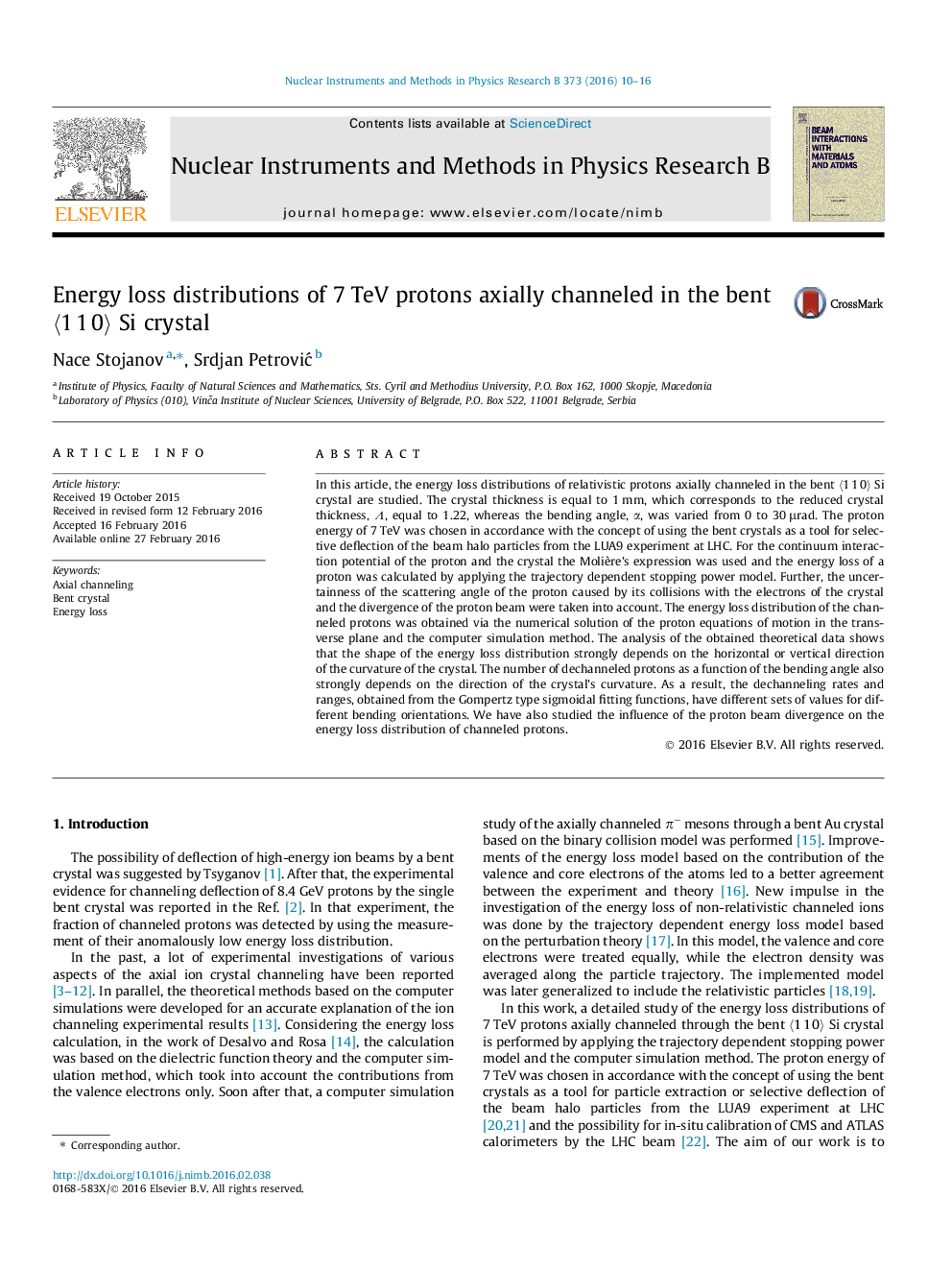| Article ID | Journal | Published Year | Pages | File Type |
|---|---|---|---|---|
| 1681453 | Nuclear Instruments and Methods in Physics Research Section B: Beam Interactions with Materials and Atoms | 2016 | 7 Pages |
In this article, the energy loss distributions of relativistic protons axially channeled in the bent 〈1 1 0〉 Si crystal are studied. The crystal thickness is equal to 1 mm, which corresponds to the reduced crystal thickness, Λ, equal to 1.22, whereas the bending angle, α, was varied from 0 to 30 μrad. The proton energy of 7 TeV was chosen in accordance with the concept of using the bent crystals as a tool for selective deflection of the beam halo particles from the LUA9 experiment at LHC. For the continuum interaction potential of the proton and the crystal the Molière’s expression was used and the energy loss of a proton was calculated by applying the trajectory dependent stopping power model. Further, the uncertainness of the scattering angle of the proton caused by its collisions with the electrons of the crystal and the divergence of the proton beam were taken into account. The energy loss distribution of the channeled protons was obtained via the numerical solution of the proton equations of motion in the transverse plane and the computer simulation method. The analysis of the obtained theoretical data shows that the shape of the energy loss distribution strongly depends on the horizontal or vertical direction of the curvature of the crystal. The number of dechanneled protons as a function of the bending angle also strongly depends on the direction of the crystal’s curvature. As a result, the dechanneling rates and ranges, obtained from the Gompertz type sigmoidal fitting functions, have different sets of values for different bending orientations. We have also studied the influence of the proton beam divergence on the energy loss distribution of channeled protons.
